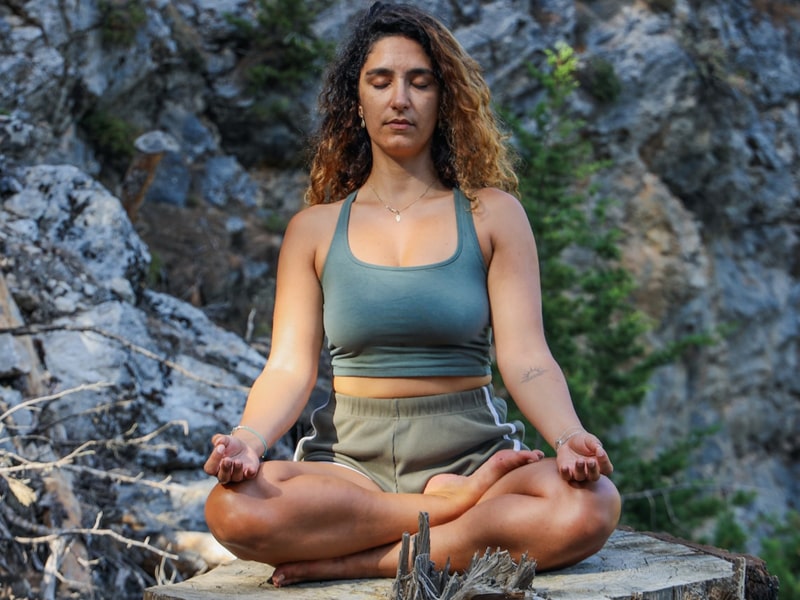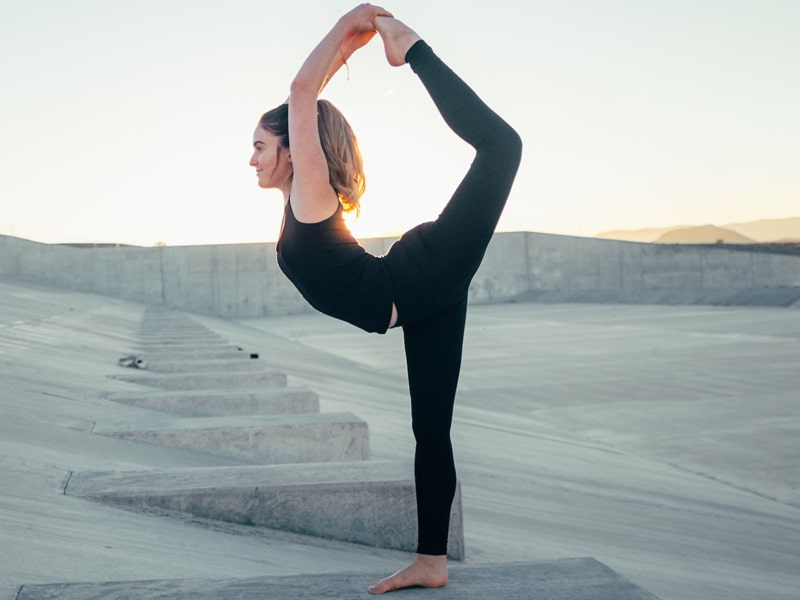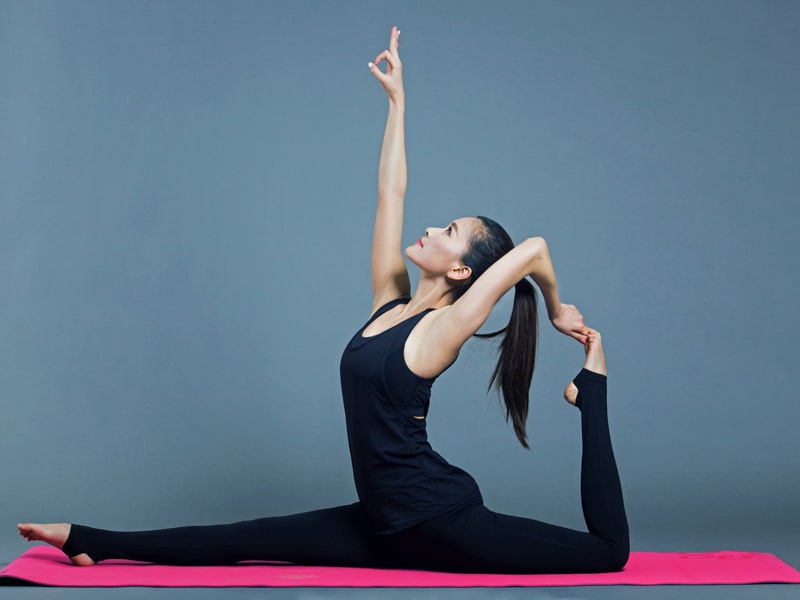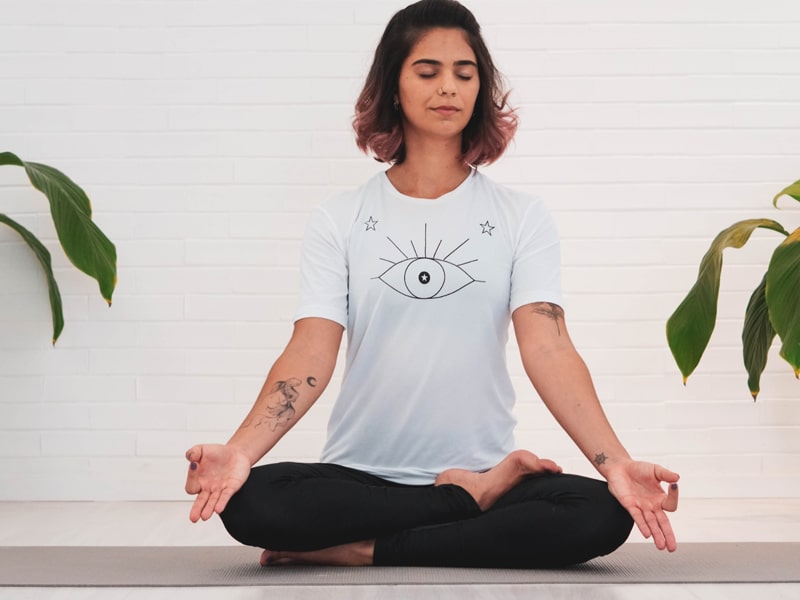What is Pranayama?
Pranayama is a Sanskrit term that refers to the practice of controlling the breath, and it is an important part of traditional yoga. Prana means “life force” or “vital energy,” and yama means “control” or “restraint,” so pranayama is the practice of controlling the breath in order to regulate and enhance the flow of prana in the body.
Pranayama techniques involve various breathing exercises, such as deep breathing, alternate nostril breathing, and breath retention, which are believed to have numerous physical, mental, and spiritual benefits. These benefits may include reducing stress and anxiety, improving lung function, increasing energy and vitality, and enhancing mental focus and concentration.
Pranayama is often practiced in conjunction with other yoga practices, such as asana (physical postures) and meditation, and it is considered an essential part of a holistic yoga practice. However, it is important to learn pranayama from a qualified instructor, as some techniques can be challenging or even potentially harmful if practiced incorrectly.
Top 4 Types of Pranayama Techniques
1. Nadi Sodhana Pranayama (Alternate Nostril Breathing)
Nadi Shodhana Pranayama, also known as Alternate Nostril Breathing, is a pranayama technique that involves regulating the breath through alternate nostrils. This technique is designed to balance the flow of energy (prana) in the body and calm the mind.
To practice Nadi Shodhana Pranayama, follow these steps :-
-
Sit in a comfortable seated position with your back straight and your hands resting on your knees with your palms facing up.
-
Close your eyes and take a few deep breaths, focusing on the sensation of the breath moving in and out of your body.
-
Bring your right hand to your face and place your index and middle fingers between your eyebrows, lightly resting your thumb on your right nostril and your ring and pinky fingers on your left nostril.
-
Use your thumb to close your right nostril and inhale deeply through your left nostril.
-
At the top of your inhale, close your left nostril with your ring and pinky fingers, release your right nostril, and exhale slowly and fully.
-
Inhale through your right nostril and then close it with your thumb.
-
Release your left nostril and exhale through it.
-
This completes one cycle. Continue inhaling through the left nostril, exhaling through the right nostril, inhaling through the right nostril, and exhaling through the left nostril for several rounds.
It is important to keep your breath slow, smooth, and even throughout the practice. You can gradually increase the length of each inhale and exhale as you become more comfortable with the technique.
Nadi Shodhana Pranayama is believed to have numerous benefits, including reducing stress and anxiety, balancing the left and right hemispheres of the brain, improving lung function, and increasing energy and vitality. It is a gentle and accessible practice that can be done by people of all ages and abilities.
2. Ujjayi Pranayama
Ujjayi Pranayama is a breathing technique commonly used in yoga practice. The word “ujjayi” comes from the Sanskrit language and means “victorious” or “triumphant.” It is also referred to as “ocean breath” due to the sound produced during its practice, which resembles the sound of ocean waves.
To practice Ujjayi Pranayama, follow these steps :-
-
Sit comfortably in a cross-legged position or in a chair with your spine straight and your shoulders relaxed.
-
Take a deep breath in through your nose, filling your lungs completely.
-
Slowly exhale through your mouth, making a “ha” sound.
-
On your next inhale, breathe in deeply through your nose, but this time, partially close the back of your throat, as if you were trying to fog a mirror. You should hear a soft hissing sound as you inhale.
-
Hold your breath for a few seconds, retaining the breath at the top of your inhale.
-
Slowly exhale through your nose while keeping the back of your throat slightly contracted, producing the same soft hissing sound as you exhale.
-
Repeat this process, inhaling and exhaling through your nose while keeping the back of your throat slightly constricted, producing the soft hissing sound.
Here are some additional tips to keep in mind when practicing Ujjayi Pranayama :-
- Try to breathe slowly and deeply, without straining or forcing the breath.
- Focus your attention on the sound of your breath as you inhale and exhale.
- Try to make your inhales and exhales equal in length, without rushing or pausing.
- If you feel lightheaded or dizzy at any point, take a break and return to normal breathing.
- You can practice Ujjayi Pranayama for a few minutes or for as long as you like. It can be a useful tool to help calm the mind and reduce stress and anxiety.
3. Kapalbhati pranayama (Skull shining breath)
Kapalbhati Pranayama, also known as the Skull Shining Breath, is a breathing technique used in yoga and pranayama practice. It involves a series of rapid, forceful exhalations that are followed by passive inhalations. The aim of the practice is to purify the respiratory system, energize the body, and bring clarity to the mind.
Here is a step-by-step guide on how to practice Kapalbhati Pranayama :-
-
Sit in a comfortable cross-legged position with your spine straight and your hands resting on your knees. You can also sit on a chair with your feet firmly planted on the ground.
-
Take a few deep breaths to prepare for the practice.
-
On the next exhale, forcefully contract your abdominal muscles to forcefully expel air out of your lungs. The inhale should happen passively without any effort.
-
Continue this process of exhaling forcefully and inhaling passively for about 20-30 times.
-
After completing the round of 20-30 breaths, take a deep breath in, and exhale slowly.
-
Pause for a few moments, and then repeat the process for another round.
-
Continue with this practice for 5-10 minutes.
Here are some additional tips to keep in mind when practicing Kapalbhati Pranayama :-
- Focus on the exhalation and let the inhalation happen passively.
- The contraction of the abdominal muscles should be quick and forceful, almost like a pump.
- Breathe only through the nostrils during the practice.
- Do not strain yourself or force the breath. Allow it to come naturally and comfortably.
- If you feel dizzy or lightheaded during the practice, stop and rest for a while.
Benefits of Kapalbhati Pranayama :-
- Cleanses the respiratory system and improves lung function.
- Boosts metabolism and aids in weight loss.
- Increases circulation and energizes the body.
- Helps to remove toxins from the body.
- Improves digestion and stimulates the digestive system.
- Calms the mind and helps to relieve stress and anxiety.
However, it’s important to note that Kapalbhati Pranayama is a powerful practice and should be avoided by people with high blood pressure, heart problems, hernia, or during pregnancy. Consult a qualified yoga teacher before starting the practice.
4. Bhramari pranayama (Humming bee breath)
Bhramari Pranayama, also known as Humming Bee Breath, is a breathing technique used in yoga and pranayama practice. It involves a series of deep, slow breaths combined with a humming sound made by the vocal cords. The aim of the practice is to calm the mind, reduce stress and anxiety, and promote overall well-being.
Here is a step-by-step guide on how to practice Bhramari Pranayama :-
-
Sit in a comfortable cross-legged position with your spine straight and your hands resting on your knees. You can also sit on a chair with your feet firmly planted on the ground.
-
Take a few deep breaths to prepare for the practice.
-
Close your eyes and take a deep breath in.
-
On the exhale, make a humming sound by gently closing your lips and making the sound “mmm” or “hum” as you exhale slowly.
-
Continue to hum until you have completely exhaled all the air from your lungs.
-
Take a deep breath in through your nose while maintaining the humming sound in your throat.
-
When you reach the top of your inhale, pause and hold the breath for a few seconds.
-
Exhale slowly and again make the humming sound as you exhale.
-
Repeat this process for 5-10 rounds.
Here are some additional tips to keep in mind when practicing Bhramari Pranayama :-
- The humming sound should be made softly and should not be forced.
- The humming sound should be continuous throughout the exhalation.
- Focus on the sound of the humming to calm the mind.
- The inhalation and exhalation should be slow and gentle.
- Breathe only through the nostrils during the practice.
Benefits of Bhramari Pranayama :-
- Calms the mind and reduces stress and anxiety.
- Helps to reduce blood pressure.
- Improves concentration and memory.
- Helps to alleviate headaches and migraines.
- Stimulates the thyroid gland and helps to regulate metabolism.
- Can help to improve sleep quality.
However, it’s important to note that Bhramari Pranayama may not be suitable for everyone, especially those with severe sinus or ear infections, and it’s always best to consult with a qualified yoga teacher before starting the practice.
Also Read :- 9 Best Yoga Resistance Bands in India
What are the benefits of pranayama according to science?
Pranayama is a practice of controlling and regulating the breath, which has been used for centuries in traditional Indian medicine and yoga. Recent scientific studies have found that regular pranayama practice can have many benefits for both physical and mental health. Here are the top 15 benefits of pranayama according to science :-
1. Reduces stress and anxiety
Pranayama has been found to be an effective way to lower cortisol levels and reduce symptoms of stress and anxiety. Cortisol is a hormone associated with stress, and high levels of cortisol can have negative effects on the body, including weight gain, high blood pressure, and impaired cognitive function.
Studies have found that practicing pranayama can help reduce cortisol levels and lower symptoms of anxiety. One study found that a 12-week pranayama intervention reduced symptoms of anxiety and depression in participants with anxiety disorders. Additionally, another study found that practicing pranayama daily for 20 minutes can reduce symptoms of post-traumatic stress disorder (PTSD) in veterans.
2. Improves lung function
Pranayama involves deep breathing, which can improve lung function and increase lung capacity. It has been found to be particularly beneficial for people with asthma, as it helps improve breathing and reduce symptoms.
A review of studies found that pranayama can improve lung function in people with asthma and chronic obstructive pulmonary disease (COPD). Deep breathing can also help improve overall lung function and reduce the risk of respiratory infections. One study found that practicing pranayama improved oxygen saturation and reduced respiratory rate in people with COPD.
3. Boosts immunity
Pranayama has been shown to increase the production of immune cells in the body, which can help fight infections and diseases. Studies have found that practicing pranayama can increase the activity of natural killer cells, which are important in fighting cancer and viral infections.
In addition, pranayama has been found to increase the production of immunoglobulins, which are antibodies that help protect the body against infections. One study found that practicing pranayama for 15 minutes daily for 12 weeks increased levels of immunoglobulin A in participants.
4. Lowers blood pressure
Pranayama has been found to be an effective way to lower blood pressure. One study found that a 12-week pranayama intervention lowered systolic blood pressure by 10 mm Hg and diastolic blood pressure by 8 mm Hg in participants with hypertension.
This may be due to the fact that pranayama helps activate the parasympathetic nervous system, which is responsible for the relaxation response in the body. It can also improve circulation and reduce the risk of heart disease.
Also Read :- Power Yoga – An Introduction to the Dynamic Practice
5. Improves cardiovascular function
Pranayama can improve cardiovascular function by reducing heart rate and improving blood flow. One study found that practicing pranayama for six months reduced resting heart rate and improved heart rate variability in participants with hypertension.
Another study found that practicing pranayama for 30 minutes daily for eight weeks improved endothelial function, which is important for cardiovascular health. Endothelial dysfunction is associated with an increased risk of heart disease.
6. Enhances cognitive function
Pranayama has been found to enhance cognitive function, including attention, concentration, and memory. One study found that practicing pranayama for 20 minutes daily for six weeks improved cognitive performance in healthy adults.
Another study found that practicing pranayama for 12 weeks improved cognitive flexibility in older adults. Cognitive flexibility is the ability to switch between tasks or thought patterns, and is important for overall cognitive function.
7. Improves sleep quality
Pranayama can improve sleep quality by reducing stress and promoting relaxation. One study found that practicing pranayama for eight weeks improved sleep quality in participants with insomnia.
Another study found that practicing pranayama for 30 minutes daily for 30 days improved sleep quality and reduced the need for sleep medication in older adults.
8. Reduces inflammation
Pranayama has been found to reduce inflammation in the body, which is associated with a wide range of health conditions, including heart disease, diabetes, and arthritis.
Studies have found that practicing pranayama can reduce levels of inflammatory markers in the blood, including C-reactive protein and interleukin-6. One study found that practicing pranayama for six months reduced markers of inflammation in participants with hypertension.
Also Read :- 6 Best Branded Aerial Yoga Hammock Swing in India
9. Improves digestive function
Pranayama can improve digestive function by promoting relaxation and reducing stress. Stress can have negative effects on digestion, including causing indigestion and increasing the risk of gastrointestinal problems.
One study found that practicing pranayama for 10 minutes daily for four weeks improved symptoms of irritable bowel syndrome (IBS) in participants. Another study found that practicing pranayama for 30 minutes daily for six weeks improved digestion and reduced constipation in older adults.
10. Enhances mental health
Pranayama has been found to enhance mental health by reducing symptoms of depression and improving overall well-being. One study found that practicing pranayama for 12 weeks reduced symptoms of depression in participants with major depressive disorder.
Another study found that practicing pranayama for 30 minutes daily for six weeks improved overall well-being and reduced symptoms of anxiety and depression in older adults.
11. Increases energy levels
Pranayama can increase energy levels by improving oxygenation of the body and promoting relaxation. One study found that practicing pranayama for six weeks improved energy levels in participants with chronic fatigue syndrome.
Another study found that practicing pranayama for 30 minutes daily for eight weeks improved fatigue and energy levels in breast cancer survivors.
12. Enhances spiritual well-being
Pranayama can enhance spiritual well-being by promoting a sense of connection to something greater than oneself. One study found that practicing pranayama for six weeks improved spiritual well-being in participants with chronic illness.
Another study found that practicing pranayama for 30 minutes daily for six weeks improved spiritual well-being and quality of life in older adults.
Also Read :- 6 Best Branded Yoga Chairs in Indian Market
13. Improves skin health
Pranayama can improve skin health by increasing circulation and promoting relaxation. One study found that practicing pranayama for eight weeks improved skin hydration and reduced the appearance of wrinkles in participants.
Another study found that practicing pranayama for 20 minutes daily for 12 weeks improved skin texture and reduced the appearance of dark circles and puffiness around the eyes.
14. Reduces pain
Pranayama has been found to reduce pain by promoting relaxation and reducing inflammation. One study found that practicing pranayama for 12 weeks reduced pain in participants with chronic pain.
Another study found that practicing pranayama for 30 minutes daily for eight weeks reduced pain and improved quality of life in patients with fibromyalgia.
15. Improves overall quality of life
Pranayama can improve overall quality of life by promoting physical and mental health, reducing stress, and enhancing spiritual well-being. One study found that practicing pranayama for six months improved overall quality of life in participants with hypertension.
Another study found that practicing pranayama for 30 minutes daily for six weeks improved overall well-being and quality of life in older adults. Overall, pranayama can be a powerful tool for promoting health and well-being in a wide range of areas.



